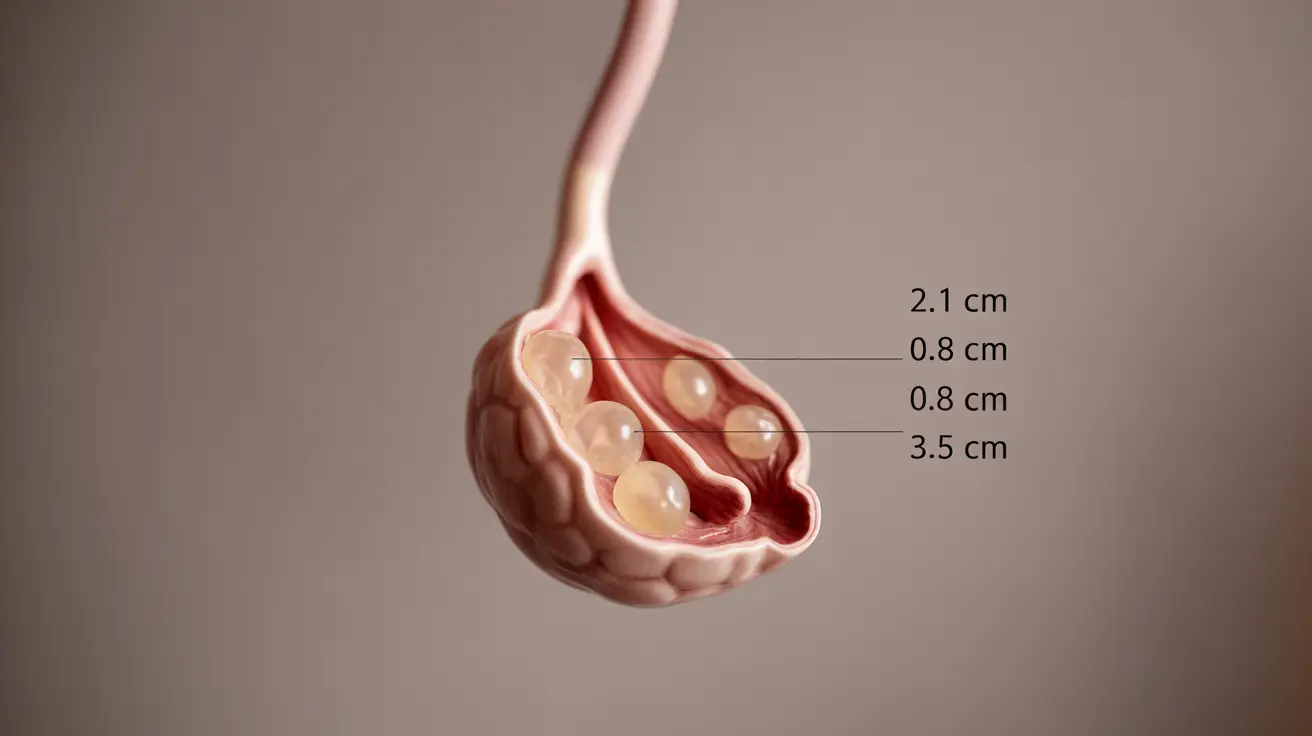Ovarian cysts are fluid-filled sacs that develop on or within the ovaries. While many cysts are harmless and resolve naturally, understanding when their size becomes concerning is crucial for women's health. This comprehensive guide will help you understand what size of ovarian cyst may require medical attention and what risks are associated with larger cysts.
Understanding Ovarian Cyst Measurements
Doctors typically measure ovarian cysts in centimeters (cm), and the size can range from very small (less than 1 cm) to quite large (over 10 cm). The size of a cyst, along with its characteristics and symptoms, helps determine whether medical intervention is necessary.
Small Ovarian Cysts: What You Should Know
Cysts under 5 centimeters are generally considered small and often don't require immediate medical intervention. These cysts typically fall into the functional category, meaning they develop as part of the normal menstrual cycle. Most will disappear on their own within a few menstrual cycles.
Monitoring Small Cysts
Even though small cysts are usually harmless, healthcare providers may recommend regular monitoring through ultrasound to ensure they don't grow or cause complications. This is especially important if you experience any unusual symptoms.
Medium-Sized Cysts: When to Be Concerned
Cysts measuring between 5 and 10 centimeters warrant closer medical attention. While not necessarily dangerous, these cysts may require more frequent monitoring and possibly intervention if they cause symptoms or show concerning characteristics.
Common Symptoms of Medium-Sized Cysts
- Pelvic pain or pressure
- Bloating
- Changes in urinary frequency
- Irregular menstrual cycles
- Discomfort during intercourse
Large Ovarian Cysts: Understanding the Risks
Cysts larger than 10 centimeters are considered large and typically require medical intervention. These cysts pose a higher risk of complications and often need surgical removal, especially if they continue to grow or cause severe symptoms.
Potential Complications of Large Cysts
- Ovarian torsion (twisting of the ovary)
- Rupture of the cyst
- Pressure on surrounding organs
- Internal bleeding
- Severe pain
Emergency Warning Signs
- Sudden, severe abdominal pain
- Fever and vomiting
- Rapid breathing
- Weakness or dizziness
- Sharp pelvic pain accompanied by vaginal bleeding
Frequently Asked Questions
What size of ovarian cyst is considered dangerous and may require surgery? Ovarian cysts larger than 5-10 cm are typically considered potentially dangerous. Surgery is often recommended for cysts larger than 10 cm, or for smaller cysts that show concerning characteristics or cause severe symptoms.
What complications can occur with large ovarian cysts over 6 to 10 cm? Large ovarian cysts can cause complications including ovarian torsion, rupture, bleeding, and pressure on surrounding organs. They may also cause chronic pain, digestive issues, and urinary problems.
How are ovarian cysts larger than 10 cm typically managed or treated by doctors? Cysts larger than 10 cm typically require surgical removal. The approach may be either laparoscopic or open surgery, depending on the cyst's characteristics and location.
What symptoms indicate that an ovarian cyst might be ruptured or twisted (torsion) requiring immediate attention? Signs of rupture or torsion include sudden, severe pelvic pain, nausea, vomiting, fever, rapid breathing, and dizziness. These symptoms require immediate emergency care.
Can ovarian cysts smaller than 5 cm cause serious health problems or do they usually resolve on their own? Ovarian cysts smaller than 5 cm typically resolve on their own within a few menstrual cycles and rarely cause serious problems. However, they should still be monitored, especially if they cause symptoms.




